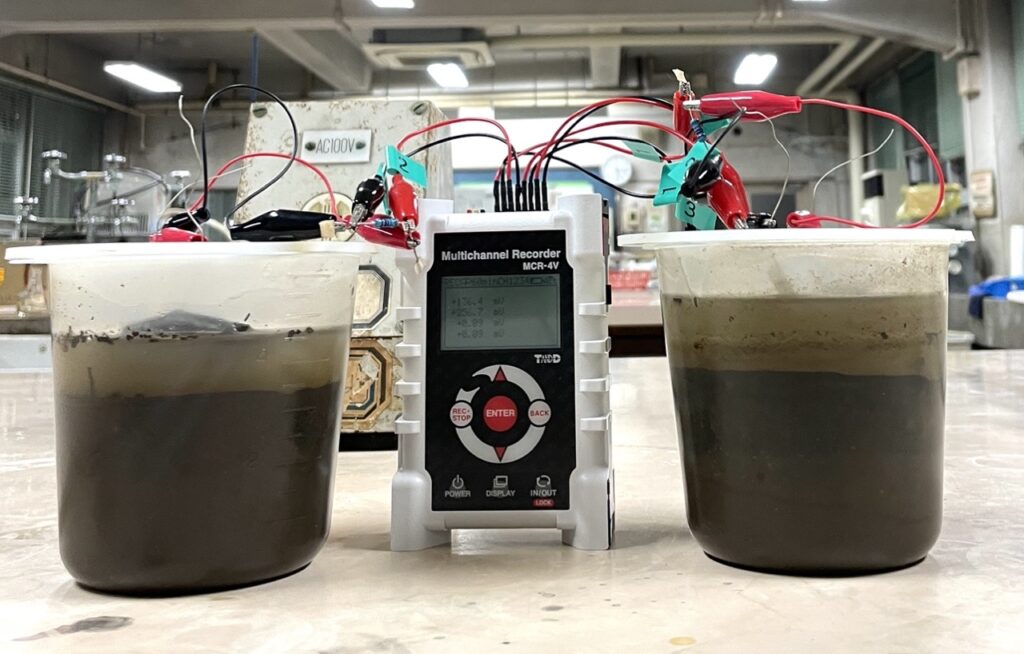Evaluation of Mud Microbial Fuel Cells With Carboxylates or 2-Hydroxy Carboxylate Added as Nutrients for Bacteria


Currently, the “energy problem” is a global issue. One solution may be the use of mud cells, which have potential as a renewable energy source because they generate electricity using the life activities of microbes in the soil. Moreover, mud cells may contribute to the achievement of Goals 7 and 8 of the SDGs.
Soil collected from the school ground was mixed with water to make mud, and placed in plastic pots. Mud cells were assembled using a platinum-catalyzed carbon felt as the anode, and a carbon felt as the cathode. The mud cells were placed in an incubator to maintain a constant temperature, and the voltage was recorded with a data logger connected to a fixed 10 KQ resistor. Once a week, the power density of the cells was measured with a potentiostat.
In this study, some kinds of nutrients, namely carboxylates and 2-hydroxy carboxylates, were tested to see if they increase power-generating bacteria in the cells. Also, separation and identification of bacteria increasing around the anode were tested by constructing electrochemical cells, using a portion of the anode from the cell as the working electrode, platinum as the counter electrode, Ag/AgCI reference electrode, and a culture fluid including phthalic acid, which is predicted to be a nutrient for power generating bacteria. The electrochemical cells, maintained at 30°C, were connected to a potentiostat. The working electrode was set at -0.2 V vs. SHE. The analysis was performed using next-generation sequencing to identify the bacteria flora in the anodes. In addition, to investigate the possibility of bacteria multiplication from waste ingredients, 5g each of edible and waste portions of potato, lemon, onion and radish were placed in the mud cells, and changes in the voltage were recorded.